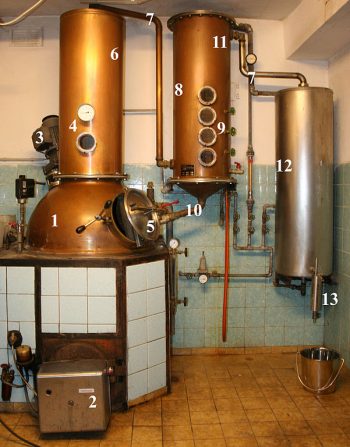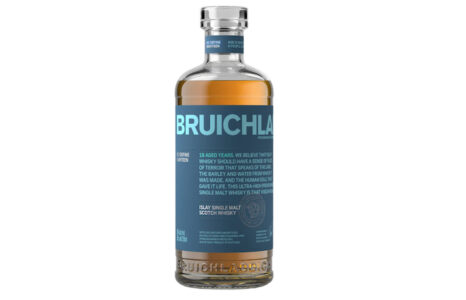
Whiskey distillation is simultaneously simple and complex. The overall concept is quite simple; wash or beer is heated to produce vapors, which pass through some kind of column before they are condensed into a distillate. The path from wash to distillate, however, can be complicated at numerous points, to various different effects.
Today, many distillers are using stills equipped with dephlegmators (also sometimes called “reflux condensers”), attachments that sit at the top of a column to provide additional reflux capacity. What’s reflux? It’s when a vapor is condensed within the column and returned to either the wash, or plates within the column that provide additional reflux power. In general, the more times alcohol is vaporized, travels up the column, and is knocked out by a reflux component before it makes its final journey up and over the neck of the still, the more refined your product will be.
How does a dephlegmator work? The attachment is usually filled with a network of tiny, plumbed tubes. When distillers turn on the attachment, those tubes fill with cold water, creating chilled surfaces on which the alcohol vapor will condense, bead up, and fall back into the column. Most stills with dephlegmators also come equipped with at least a handful of plates within the column. These plates allow vapor to pass through from underneath, but trap vapor falling from above, creating even more reflux. Too many plates, or too much reflux, and you’ll end up with a super high proof distillate with almost no flavor left in it – vodka!
Some distilling traditions don’t use dephlegmators at all, namely Scotland and Ireland. Many of those distillers favor the use of simple pot stills, which have no plates and no dephlegmator, instead relying simply on the shape and length of the neck to concentrate the vapors to produce a richer, heavier distillate.
Lastly, how do you pronounce dephlegmator without sounding like a nincompoop? It’s easy: duh-fleg-mater. Just channel your inner Arnold, and you’ll be just fine.



